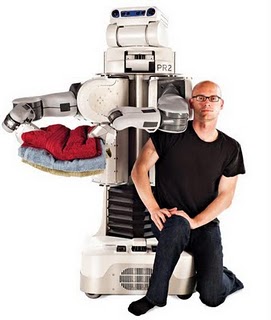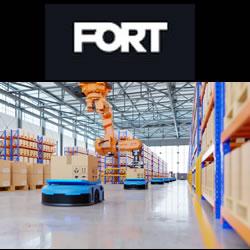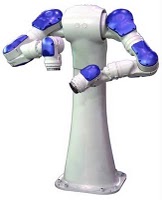Yaskawa America's Motoman Robotics Division signed a collaboration agreement with the Southwest Research Institute (SwRI) to port Willow Garage's ROS (Robotic Operating System) to the Motoman line of industrial robots.
"ROS (Robotic Operating Systems) Everywhere!" says Willow Garage's Steve Cousins
Frank Tobe | The Robot Report

Pieter Abbeel was one of this year's MIT Technology Review 35 Innovators Under 35 (TR 35) award winners as was Brian Gerkey of Willow Garage. Pieter and his team at UC Berkeley programmed a robot to learn how to perform tasks such as folding laundry without detailed instructions. Brian oversees development of the Willow Garage open source ROS software used to control the robot. Photo credit: Technology Review, Winnie Wintermeyer.
|
Brian Gerkey |
The industrial robotics industry is confronted today with the modification of production processes due to the trend toward individualization of consumer products. This requires that handling of robots be much easier, with greater flexibility and rapidity, and that accuracy has to be increased.
Thus it was a big leap forward last week when Yaskawa America's Motoman Robotics Division signed a collaboration agreement with the Southwest Research Institute (SwRI) to port Willow Garage's ROS to the Motoman line of industrial robots. This is the first authorized porting of ROS to an industrial robot. SwRI plans to develop, demonstrate and release to the open-source community an interface between Motoman robots and ROS thereby taking this award-winning software beyond the realm of universities and research and into the world of business.
SwRI (Southwest Research Institute) is an independent, nonprofit, applied research and development organization based in San Antonio, Texas, with more than 3,000 employees and an annual research volume of more than $500 million.
Yaskawa America Motoman Robotics division offers arc welding robots, spot welding robots, painting robots, handling and other robots. It's most recent two-armed handling robots are being implemented in the automotive industry in Germany and Japan.
W. Clay Flannigan, Manager of the Robotics and Automation Engineering Section of SwRI, said:
We are working to build a general purpose interface between the broad manipulation and perception capabilities of the ROS framework and the highly reliable architecture of industrial robots. We plan to implement the interface at a low-level within the existing robot controller that enables the capabilities of the ROS manipulation stack, while maintaining the safety inherent in the industrial controller. By providing the solution as open source, we hope to build a community around the use of ROS in a wide variety of industrial applications. Ideally, the community will expand to encompass more robots, sensors and industrial controllers, and we hope to contribute to the process.
We plan to release the source in the first quarter of 2012.
Erik Nieves, Technology Director for Yaskawa America's Motoman Robotics Division, explained why Yaskawa America is pursuing an open source controller interface for it's Motoman line of robots:
|
Motoman Dual-arm Robot |
Yaskawa's strategy is to offer many controllers for the many different audiences and applications that our robots address. This ROS adaption is in line with that strategy.
The next step for industrial robotics is to be more sensor aware; to be able to accomodate the many new capabilities showing up in the service sector. It's clear that ROS is able to handle all of these and it saves our programming department from writing drivers for each and every possible configuration. We want ROS for these next generation devices which will come first to ROS.
A near-term goal of the project is to demonstrate advanced material handling solutions that leverage the path planning, grasp planning, and perception frameworks within ROS to enable robotic solutions that would be difficult or expensive with current solutions. One can only imagine the longer-term future. Perhaps ROS could become the universal robot controller that most end users wish for. Perhaps the days of the clunky teaching pendant will soon be replaced by an iPad or tablet running an ROS applet.
|
Steve Cousins |
Yaskawa's Motoman line of robots will, by using ROS, at no significant research cost on the software side, be able to add features to their existing robot manipulators enabling them to compete in terms of handling new manufacturing processes. ROS and Willow Garage are getting a boost to the credibility of ROS by this very real and timely proof of concept. Also getting a big boost are the many industrial integrators who add a wide range of industrial expertise to the ROS community thereby making both groups stronger.
The content & opinions in this article are the author’s and do not necessarily represent the views of RoboticsTomorrow
Comments (0)
This post does not have any comments. Be the first to leave a comment below.
Featured Product




